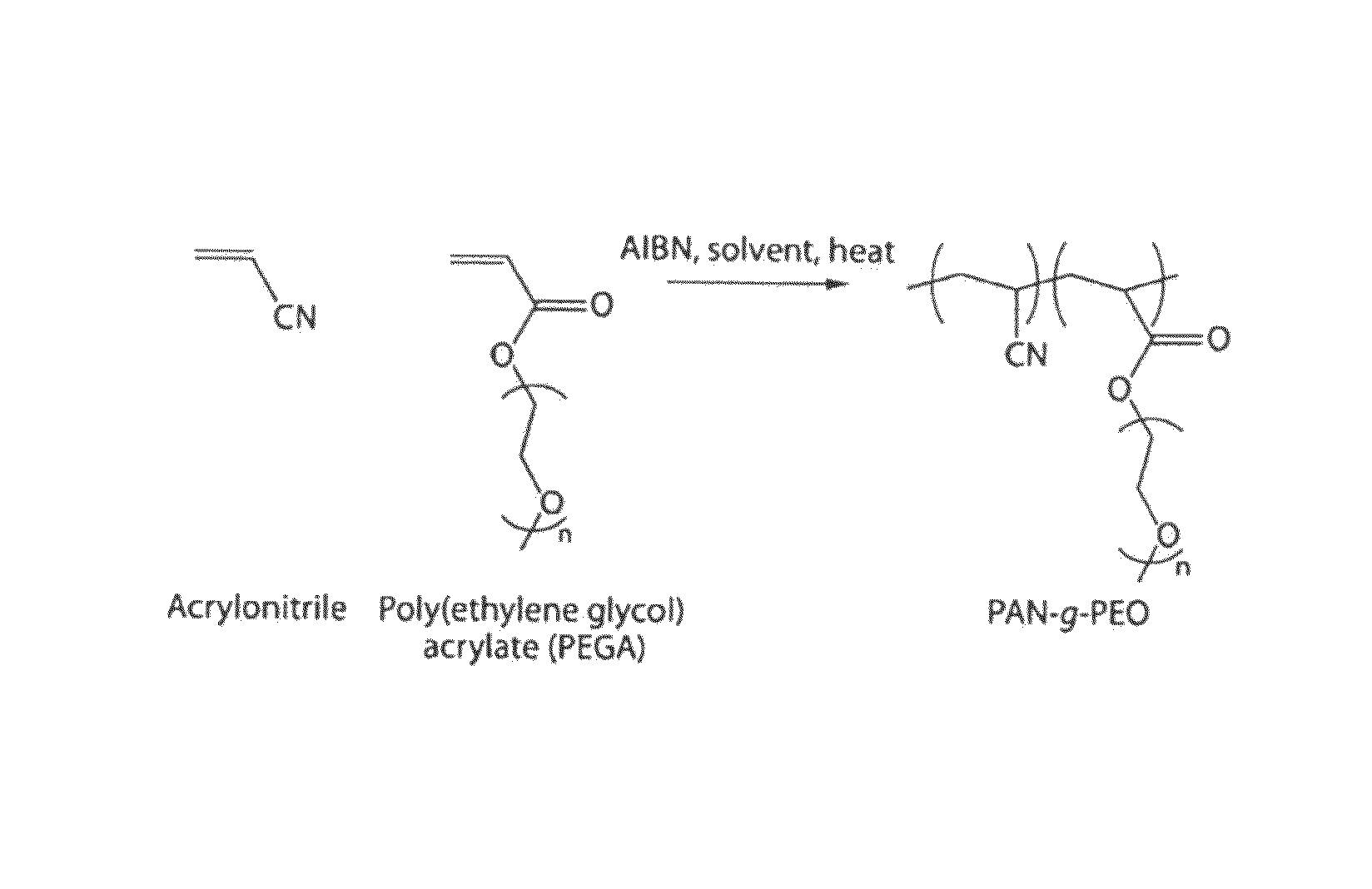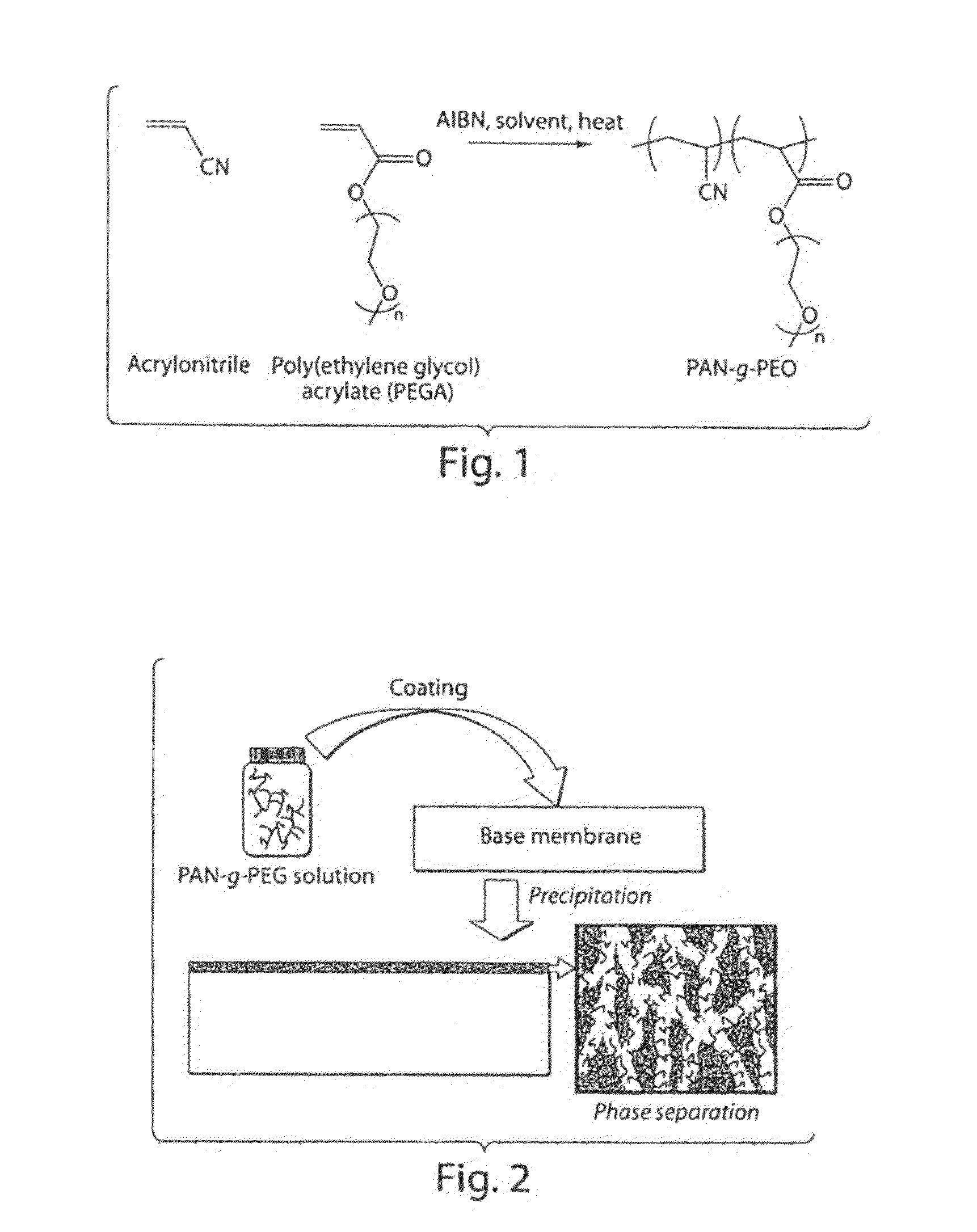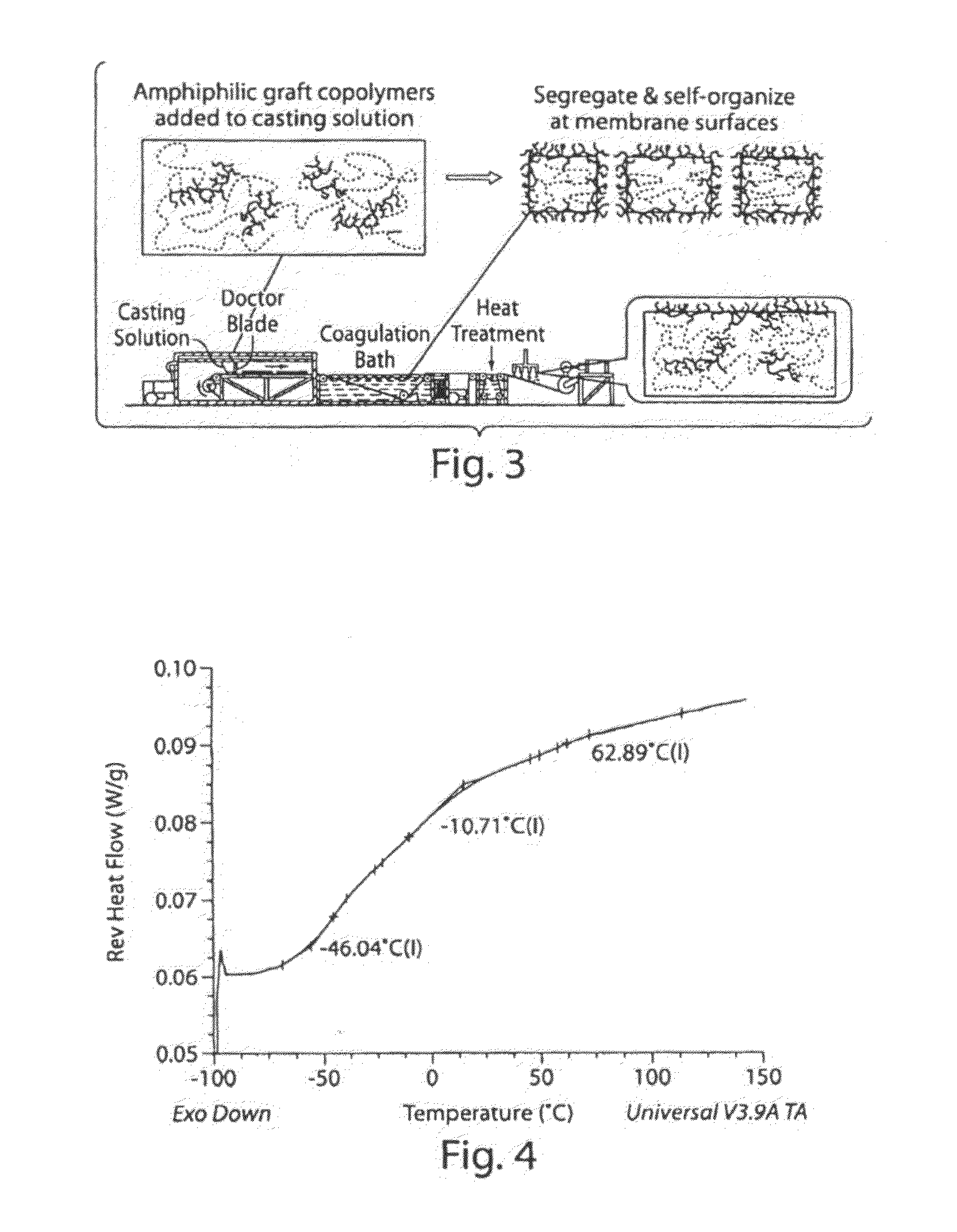Fouling resistant membranes formed with polyacrylonitrile graft copolymers
a polyacrylonitrile and amphiphilic graft technology, applied in water/sewage treatment, osmosis/dialysis, separation processes, etc., can solve the problems of reducing the lifetime of the membrane, affecting the filtration effect, and increasing the energy requirements
- Summary
- Abstract
- Description
- Claims
- Application Information
AI Technical Summary
Benefits of technology
Problems solved by technology
Method used
Image
Examples
example 1
Synthesis of Polyacrylonitrile-graft-poly(ethylene glycol) (PAN-g-PEO) using Toluene as a Solvent
[0061]In this example, a graft copolymer with a PAN backbone and PEO side-chains, used in the preparation of certain membranes of the invention, was synthesized as follows. Acrylonitrile (Aldrich) and poly(ethylene glycol) methyl ether acrylate (PEGA) (454 g / mol, Aldrich) were passed through a column of basic activated alumina (VWR) to remove the inhibitor. Acrylonitrile (10 g, 188 mmol), PEGA (10 g, 22 mmol) and azobisisobutyronitrile (AIBN, 0.01 g, Aldrich) were dissolved in toluene (50 ml) in a round bottom flask. The flask was sealed. Nitrogen was bubbled through the reaction mixture with stirring for 20 minutes. The flask was then kept at 90° C. with stirring for 24 hours. The reaction mixture, which was observed to contain precipitated polymer, was then precipitated in hexane, and purified by stirring two fresh portions of hexane for several hours, followed by drying in the vacuum ...
example 2
Synthesis of Polyacrylonitrile-graft-poly(ethylene glycol) (PAN-g-PEO) using Dimethyl Formamide as a Solvent
[0063]In this example, acrylonitrile (Aldrich) and poly(ethylene glycol) methyl ether acrylate (PEGA) (454 g / mol, Aldrich) were passed through a column of basic activated alumina (VWR) to remove the inhibitor. Acrylonitrile (10 g, 188 mmol), PEGA (10 g, 22 mmol) and azobisisobutyronitrile (AIBN, 0.01 g, Aldrich) were dissolved in dimethyl formamide (DMF, 50 ml) in a round bottom flask. The flask was sealed. Nitrogen was bubbled through the reaction mixture with stirring for 20 minutes. The flask was then kept at 60° C. with stirring for 24 hours. The reaction mixture was then precipitated in a 1:1 mixture of hexane and ethanol, and purified by redissolving the polymer in DMF and reprecipitation in 1:1 hexane-ethanol mixture, followed by drying in the vacuum oven overnight. The composition of the white polymer obtained was calculated from the 1H-NMR spectrum, using the ratio of...
example 3
Microphase Separation Characteristics of PAN-g-PEO Samples with Different Casting Conditions
[0064]To observe the microphase separation characteristics of PAN-g-PEO, three different sets of samples were prepared for differential scanning calorimetry (DSC) testing in this example. DSC was done using a TA Instruments Q100 in modulated DSC (MDSC) mode so the kinetic effects could be removed from the obtained data and glass transitions could be observed more clearly through isolation of the reversible heat flow.
[0065]The first set of samples was aimed at simulating the conditions for membranes cast in isopropanol. For that, a glass microscope slide was covered with a thin layer of 20 wt % solution of PAN-g-PEO in DMF, so that approximately 0.3 ml of solution was spread over an area of 1.5 cm by 3 cm. The slide was then immersed in isopropanol for 30 minutes, followed by immersion in water for 10 minutes. The recovered transparent film detached from the glass and was dried in a vacuum ove...
PUM
| Property | Measurement | Unit |
|---|---|---|
| mean diameter | aaaaa | aaaaa |
| wt % | aaaaa | aaaaa |
| contact angle | aaaaa | aaaaa |
Abstract
Description
Claims
Application Information
 Login to View More
Login to View More - R&D
- Intellectual Property
- Life Sciences
- Materials
- Tech Scout
- Unparalleled Data Quality
- Higher Quality Content
- 60% Fewer Hallucinations
Browse by: Latest US Patents, China's latest patents, Technical Efficacy Thesaurus, Application Domain, Technology Topic, Popular Technical Reports.
© 2025 PatSnap. All rights reserved.Legal|Privacy policy|Modern Slavery Act Transparency Statement|Sitemap|About US| Contact US: help@patsnap.com



